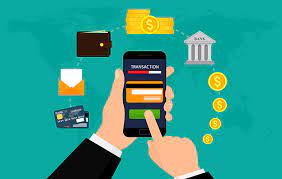Digital payment systems integrate with traditional banking systems through various mechanisms and technologies. Here are some common ways in which this integration occurs:
- Bank Account Linking: Digital payment systems often provide the option for users to link their bank accounts to the platform. Users can provide their bank account information, such as account number and routing number, to establish a connection between the digital payment system and their traditional bank account. This allows for seamless transfer of funds between the two systems.
- Payment Gateway Integration: Many digital payment systems act as intermediaries between customers and merchants. When a customer makes a payment using a digital payment system, the payment is processed through a payment gateway that interfaces with the traditional banking system. The gateway facilitates the authorization and transfer of funds between the customer’s bank account and the merchant’s account.
- Automated Clearing House (ACH) Transfers: ACH transfers are a common method for integrating digital payment systems with traditional banking systems. ACH transfers enable electronic funds transfers between bank accounts in a secure and standardized manner. Digital payment systems utilize ACH transfers to facilitate transactions, such as direct deposits, bill payments, and person-to-person transfers.
- Card Networks: Digital payment systems often support card-based transactions, such as credit or debit card payments. Card payments rely on established card networks like Visa, Mastercard, or American Express. When a user makes a card payment through a digital payment system, the transaction is processed by the card network, which interacts with the user’s bank to authorize and settle the payment.
- API Integration: Application Programming Interfaces (APIs) play a crucial role in integrating digital payment systems with traditional banking systems. APIs allow different systems to communicate and exchange data securely. Banks provide APIs that enable digital payment systems to access account information, initiate transfers, and perform other banking-related operations on behalf of the user.
- Settlement and Reconciliation: Digital payment systems need to settle funds with the traditional banking system to ensure the transfer of funds between parties. Settlement processes involve reconciling transactions, verifying account balances, and transferring funds from the digital payment system’s accounts to the respective bank accounts.
- Compliance and Regulatory Requirements: Integration between digital payment systems and traditional banking systems must comply with applicable regulations and security standards. Both systems need to establish secure communication channels, implement Know Your Customer (KYC) procedures, and adhere to anti-money laundering (AML) and other regulatory requirements.
The specific integration methods may vary depending on the digital payment system, the banking system, and the region or country in which they operate. Collaboration, partnerships, and adherence to industry standards and regulations are crucial for seamless integration and interoperability between digital payment systems and traditional banking systems.
SHARE
